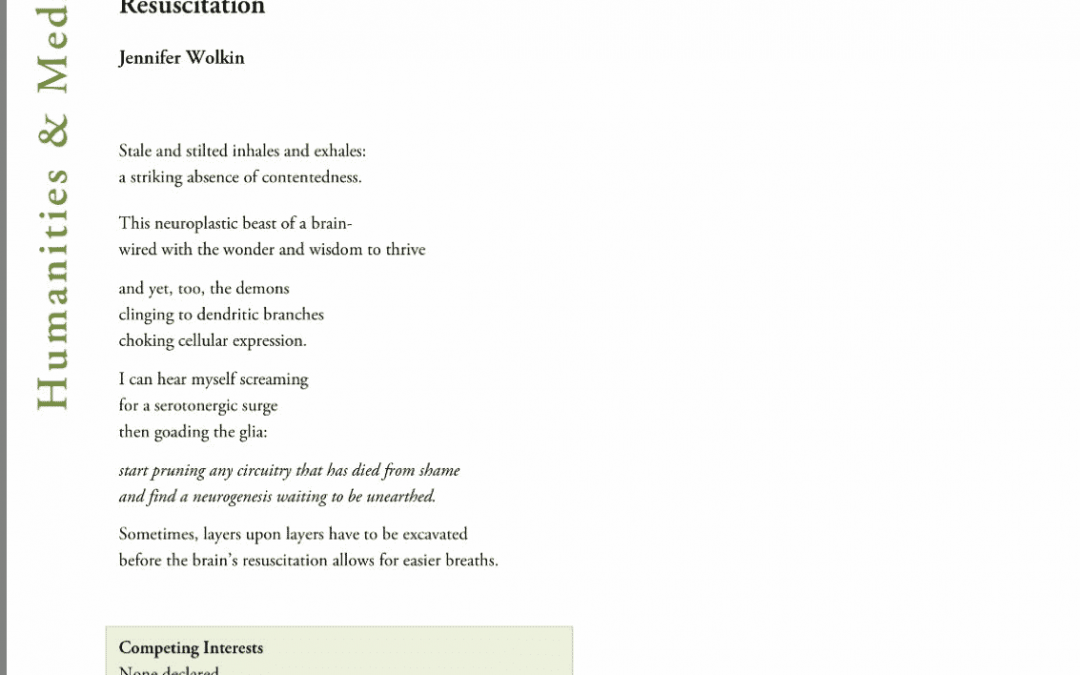
by Jennifer Wolkin | Jul 5, 2018 | Blog, Brain Health, Mindfulness, PTSD, Wellness
On the evening of March 26th, 2012, Yvonne Kent Pateras suffered a massive hemorrhagic stroke, leaving her unable to speak or move. She also experienced “locked-in” syndrome. These are Yvonne’s own words regarding the traumatic stroke she experienced:

“I had the experience of knowing what was happening to me from the beginning. I felt a sinus rhythm in my head becoming louder. I tried to center myself, but it was over before I had time to act. I opened my mouth to shout for help-the noise that left my body was the most primordial noise. My beautiful voice had been replaced by the noise of a wounded beast. I wouldn’t hear another word for the next for 3 months. I knew that I had not only suffered a stroke, I was paralyzed and locked in. I couldn’t tell my family that I knew what was going on. I tried to just keep my neurons busy and alive. I did simple counting exercises to stay calm and occupied-to keep my adrenaline levels under control. I was determined to survive.”
After four months in the hospital, to everyone’s surprise, and with extraordinary courage, Yvonne was able to regain speech and movement. Yet, in a span of approximately ten months, she suffered three ischemic strokes, and another hemorrhagic one. Since different kinds of strokes require different treatments, medical care was challenging.
Yvonne persevered. She said that recovery required “endless effort.” She can now walk without difficulty. She has a light speech impediment and lost some functioning in her right hand.
As we now know, with post-traumatic growth, trauma like this can often serve as a catalyst for a profound awakening to an emotional and spiritual transformation. Yvonne’s awaking came in the form of writing poetry.

“Following the stroke I went through a spell of re-learning, like being born again. Feelings were overpowering my mind’s concentration and understanding. Writing verses were facilitating the expression of my feelings. Publishing my work also gave me upmost satisfaction, particularly as the response by other stroke victims was so moving. Poetry takes the weight off my legs, gives me wings!!!”
You can find Yvonne’s poetry in her book, Stroke Journeys, by clicking on this link.

by Jennifer Wolkin | Jul 4, 2018 | Blog, Mindfulness, PTSD, Wellness
There is research that those experiencing PTSD reported improved well-being in response to poetry therapy. This might be the case because a hallmark of having experienced trauma is the subsequent difficulty processing the experience, which results in avoiding and suppressing associated emotions/memories.
Poetry therapy has provided an outlet for those suffering with PTSD to start to integrate many of these feelings, and even more so, to start to reframe the traumatic experience.
Poetry therapy itself is a bit abstract to describe, but there are a few ways to engage with it. Here is a multi-model poetry therapy practice developed by Nicholas Mazza, the founding and continuing editor of the Journal of Poetry Therapy.
According to Mazza’s model, poetry therapy involves three main components:
- Receptive/prescriptive: This part of therapy involves the clinician/therapist reading a poem out loud, and then subsequently encouraging the client to react to it, either verbally, non-verbally, or both. The therapist might even prompt: “Is there a particular line in the poem that resonated with you?”, or “I noticed you started to become teary-eyed when I read this line…”
- Expressive/creative: This entails actual creative writing. The therapist promotes stream of consciousness writing that might aid in discovering blocked emotions, parsing felt emotions, or retrieving memories that are difficult to articulate. The therapist might offer a prompt to help someone get started.
- Symbolic/ceremonial: This includes working with metaphor/simile to help further explain emotions that are hard to describe in a more literal sense. The ceremonial part may consist of writing a letter to someone they may have lost and then burning it.
The efficacy of poetry therapy is still being studied. Most of the empirical evidence for its effectiveness comes through James Pennebaker’s (a pioneer in the field of Positive Psychology) work in the therapeutic use of expressive writing. His studies have indicated that the use of expressive writing, even for as little as 15 minutes over the course of 4 days, resulted in positive health effects. In addition, his initial work dealt with the use of expressive writing to heal wounds from traumatic stressful events.
One case in point is that in the aftermath of 9/11, poetry was utilized as a healing mechanism. According to a New York Times article on October 1, 2001:
“In the weeks since the terrorist attacks, people have been consoling themselves—and one another—with poetry in an almost unprecedented way … Improvised memorials often conceived around poems sprang up all over the city, in store windows, at bus stops, in Washington Square Park, Brooklyn Heights, and elsewhere. …”
In some ways poetry gives us the way to speak about the unspeakable. It is more and more common for those suffering with medical challenges to write their story, many times in poetic form, to aid in their own healing. As always, it is crucial to note that just like with mindfulness approaches to trauma, poetry therapy is most often used in conjunction with other therapies.
On a personal note, I’m particularly drawn to this type of therapy and recently started studying for my MFA at Queens College. I am touched by the profound pain that is both individually and collectively felt, how this pain can displace someone from others and their selves, and yet, the profound capacity for resilience, healing, and growth. Aside from writing my own work, I hope to employ poetry as a technique to help my clients say what they couldn’t otherwise say.
Here’s an example of a poem that I recently published in the British Journal of Medical Practice in this vein:






